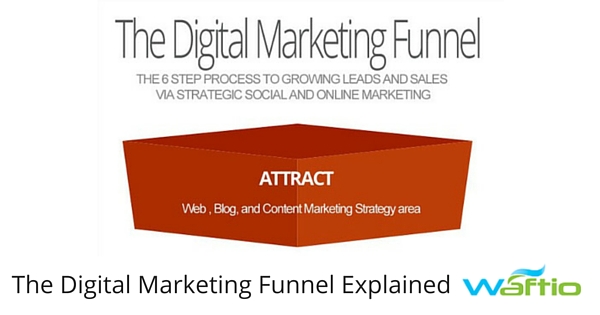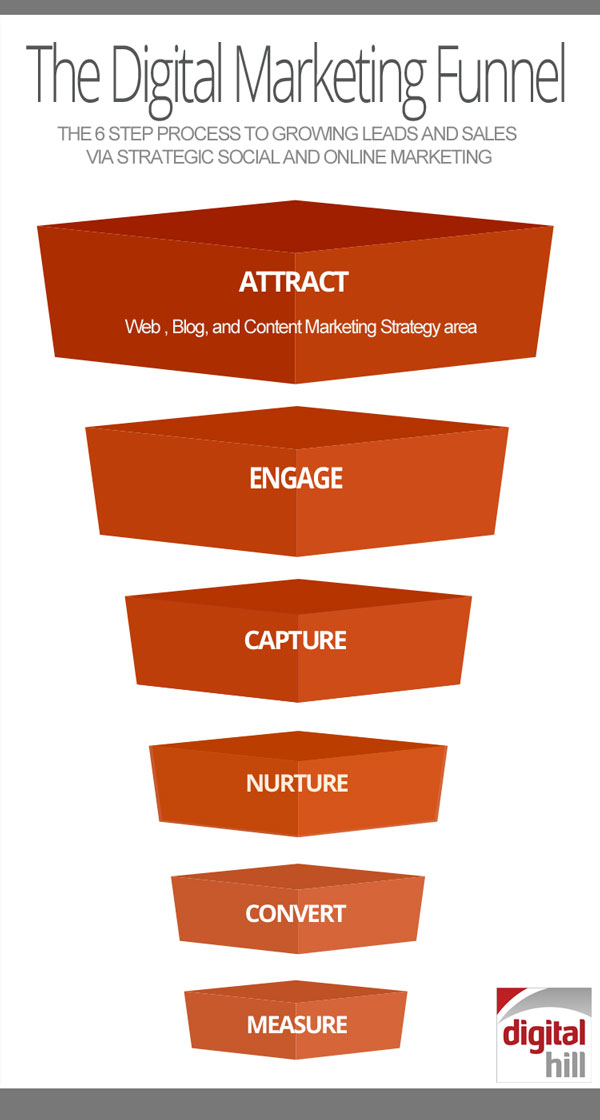For those relatively new to SEO and online marketing, one of the most important tools for structuring your marketing is the digital marketing funnel. This six-stage process describes every step on the journey of finding leads, turning them into sales, and retaining them as customers.
This process is visualized as a funnel or an inverted triangle. You start with a great many potential leads at the top, but at each step, only some will choose to move further on in the buying journey. Many leads enter at the top, but only a relative few exit at the bottom as steady customers.
A Quick Guide To The Six Stages Of The Marketing Funnel
I. Attract
This is the heart of content marketing. You should have a wide variety of materials, such as blogs, videos, and infographics, designed to bring people to your website in the first place. Good SEO helps ensure these are near the top of Google searches, where they can be easily seen.
II. Engage
Getting visitors to your website isn’t enough. The materials there must actively engage them, both by being interesting enough for them to view, and compelling enough they want to share them with friends. Understanding your market, their needs, and the searches they’re likely running on Google is the key to engaging them.
III. Capture
To move further down the funnel, leads must take the next step and engage with your website in a more active way. This could be contacting support with questions, or signing up for a newsletter, free ebooks, webinars, or other giveaways that require trading their email address or other customer data. Once a lead has given away some personal information, they’re far closer to becoming buyers.
IV. Nurture
Once you have means of direct contact with leads who haven’t yet become buyers, it’s important to keep reminding them of your existence. Emails with special offers, coupons, newsletters, and even social media outreach can all be effective ways to do this.
If they aren’t ready to buy right now, they need to have this drip-feed of content to ensure your business will be the first they think of when they are ready to buy.
V. Convert
This is the actual moment they become customers and is generally handled like any other sales conversion. They’ll reach out directly to sales staff, and be guided through the final stages of the purchase process.
This also illustrates one way digital marketing is different from offline marketing: This may be the first time they actually have contact with a live human being at your company, with all other business contact being via website materials and automated emails.
VI. Measure
Digital sales conversions is a cyclical process which should be continually refined. Keep track of the results of each stage of the process, and see which methods produce the most conversions. 100% conversions are a practical impossibility, but keep trying to push the percentage higher!
Understanding the marketing funnel will help you gather better leads at the top, and ensure that more of them complete the journey to full-fledged customers. With this tool, you’ll be on your way to far greater conversions and ROI on your online marketing investments.

Author: Mike Gingerich, President of web firm Digital Hill, Co-Founder of TabSite .
Digital and Social Media Marketer, Speaker, and Business Consultant. Part geek, part marketer, total digital junkie! Seeking to add value, make the complex simple, and leave a positive impact.
Follow me on twitter: @mike_gingerich.






Pingback: The Importance of Cleaning Your Email List - Waftio | Blog
Pingback: The Value of a CTA in Your Blog Post - Waftio | Blog